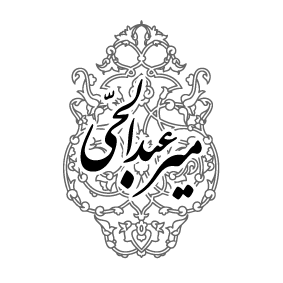Laminated Glass: A Comprehensive Review of Features, Benefits, and Applications
Laminated glass, as one of the key products in the glass manufacturing industry, holds a special place in construction, industrial, and interior decoration projects due to its safety features, resistance, and aesthetics. This product consists of two or more layers of glass bonded together with intermediate layers such as PVB (polyvinyl butyral) or EVA (ethylene vinyl acetate). As a glass manufacturer, we produce laminated glass with national and international standards using advanced technologies and high-quality raw materials. In this report, relying on credible Iranian sources, we examine the production process, features, applications, and standards of laminated glass to provide localized, original, and accurate content.
Production Process
The production of laminated glass is a complex and precise process that requires advanced equipment and adherence to quality standards. The production stages include:
- Glass Washing and Preparation
- Placing the Intermediate Layer
- Initial Pressure and Heat
- Autoclave
Glasses (usually tempered or raw) are cleaned and dried using horizontal washing machines to be free of any contamination, dust, or moisture.
The PVB or EVA layer with standard thicknesses (38, 76, or 152 microns) is placed between the glass layers. This stage is performed in a clean room to prevent any impurities from entering.
The glasses are placed under pressure and heat (around 150°C) in a lamination furnace to bond the intermediate layer to the glasses and create initial integrity.
The glasses are placed in an autoclave furnace for 5 hours for final stabilization and complete transparency. This stage ensures permanent adhesion and high resistance of the glass.
Technical Production Specifications:
Glass Thickness
4+4, 6+6, 8+8, 10+10, or 12+12 mm (custom combinations are also possible).
PVB Thickness
0.38, 0.76, or 1.52 mm (1.52 mm is the most common for bulletproof applications).
Dimensions
Standard up to 320×220 cm; custom up to 600×300 cm.
Equipment
Washing machine, clean room, lamination furnace, and autoclave.
Features and Benefits
Laminated glass, due to its multi-layer structure and PVB or EVA intermediate layer, has numerous features and benefits that make it an ideal option for various applications. The table below shows the key features and benefits:
- High Safety
- Sound Insulation
- Thermal Insulation
- UV Protection
- Impact and Explosion Resistance
- Design Variety
- Durability and Environmental Sustainability
In case of breakage, the PVB layer holds the glass pieces in place, reducing the risk of injury.
Reduces noise up to 45 decibels, suitable for noisy environments like large Iranian cities.
Reduces heat transfer, especially with Low-E glasses, optimizing energy consumption.
Blocks 99% of ultraviolet rays, preventing fading of furniture and interior decorations.
Bulletproof and explosion-resistant types for security applications like banks and jewelry stores.
Available in clear, frosted, colored, crystal (high transparency), and sandblasted types to match various architectural styles.
Resistant to moisture, sunlight, and weather conditions; recyclable and environmentally friendly.
Ordering and Installation Process
- Ordering: Customers must specify color, thickness, dimensions, and required fittings. On-site measurement services are available.
- Production Time: Standard production takes 7 working days, with an expedited option (1 day) available.
- Installation: Must be performed by professionals to prevent damage. The process includes precise measurement, pre-tempering cutting, and installation with appropriate fittings.
- Pricing: Calculated based on thickness, color, and area (square meter × unit price). For example, in 2024, the price of standard tempered glass ranges from 700,000 to 1,500,000 IRR per square meter.
Applications
Laminated glass is used in a wide range of projects due to its safety and aesthetic features:
Residential and Commercial Buildings
- Windows, entrance doors, glass partitions, glass facades (like curtain walls), glass roofs, and balcony railings.
- Suitable for villas, residential towers, and shopping centers (like Iran Mall).
Security Applications
- Bulletproof glasses for banks, jewelry stores, museums, and special vehicles.
- Explosion-resistant glasses for government buildings and sensitive centers.
Automotive Industry
- Vehicle windshields for safety against breakage and passenger protection.
Interior Decoration
- Glass tables, shower cabins, aquariums, and skylights.
- Colored and patterned glasses for creating decorative effects inspired by traditional Iranian architecture.
Public Spaces
- Airports, metro stations, hospitals, and galleries to enhance safety and aesthetics.
Key Tips for Choosing Laminated Glass
- Appropriate Thickness: For light applications like partitions, 4+4 mm is sufficient, but for security applications, 10+10 mm or more is recommended.
- Intermediate Layer Type: PVB for standard applications and EVA for special projects (like curved glasses).
- Quality Standards: Ensure it has Iranian and international standard certificates.
- Expert Consultation: Contact our experts for selecting the best glass type and fittings.
